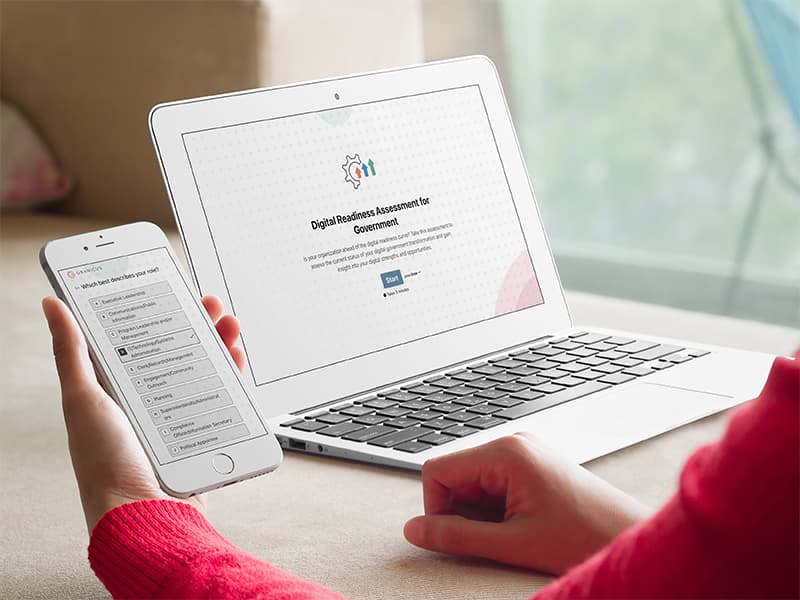What is digital readiness?
Digital readiness is like having the right tools in your toolbox — it’s the ability of individuals, businesses, and organizations to effectively adopt, implement, and utilize digital technologies. It’s about being prepared to embrace digital transformation, adapt to new digital tools, and integrate these technologies into daily operations and strategic planning.
Think of digital readiness as the first impression of an organization. Just like a dated outfit can give the wrong impression, a dated website or non-mobile-friendly digital presence can make users think less of an organization.
While public sector agencies need not be at the cutting edge of digital innovation, they must be able to adapt to the evolving needs of their communities. Failing to do so affects public perception, hurts workforce recruitment, hinders efficiency, and raises costs.
Digital readiness vs. digital maturity
Digital readiness refers to an organization’s preparedness to adopt and implement digital technologies, focusing on the foundational tools, skills, and infrastructure needed to start digital transformation.
So, what’s the difference between digital readiness and digital maturity? Digital readiness is about being prepared to begin the digital journey. It’s about having the foundational tools, skills, and infrastructure needed to start digital transformation. On the other hand, digital maturity is the advanced stage where an organization has fully integrated digital technologies into its operations, culture, and strategy, leveraging them for continuous innovation and growth.
Organizations must understand and use both concepts to inform, plan, and execute digital transformation strategies to succeed.
Finding success
Governments around the world have found success thanks to understanding digital readiness.
The United Kingdom government consolidated its digital services through the GOV.UK platform, which centralizes all government services and information, making them accessible online. This digital readiness has improved the efficiency and accessibility of public services, allowing citizens to complete various tasks online, such as tax filings, benefit claims, and vehicle registrations, all in one place.
Estonia has pioneered digital governance, implementing a comprehensive e-governance system that includes digital identities for citizens, online voting, e-tax services, and a paperless government.
This allowed Estonia to offer efficient, transparent, and accessible public services, significantly reducing bureaucratic overhead and enhancing citizen engagement. Estonia’s e-residency program has also attracted global entrepreneurs, boosting its economy.
Here in the United States, governments large and small are focused on maturing their digital readiness.
Gainesville, Florida, sought to deliver a more people-centered government model and chose a holistic approach, digitizing paper processes and revamping their website. The city adopted a data-driven approach, backed by site metrics and comprehensive user feedback, to guide its enhancement strategy. Through thoughtful design and implementation, Gainesville created a modern platform to successfully address the changing needs of residents and improved user satisfaction by 70%.
The Department of Veterans Affairs invested in digital health services, including telemedicine, electronic health records, and online appointment scheduling.
Digital readiness allowed the VA to continue providing care to veterans through telehealth services during the COVID-19 pandemic, ensuring that veterans could access healthcare safely and conveniently.
And, three years ago, the General Services Administration undertook an ambitious project: Rebuild USA.gov, often referred to as the federal government’s digital front door, into a more user-friendly information portal that took advantage of modern web design methods, mobile responsiveness and accessibility features.
The result was a better website that leapfrogged from an outdated, cluttered mess to a sleek, sophisticated information portal.
This improvement to USA.gov shows the importance of digital readiness in the public sector. Like their private sector counterparts, public sector organizations must continually push to provide stakeholders with a technology experience on par with the general technology ecosystem.

